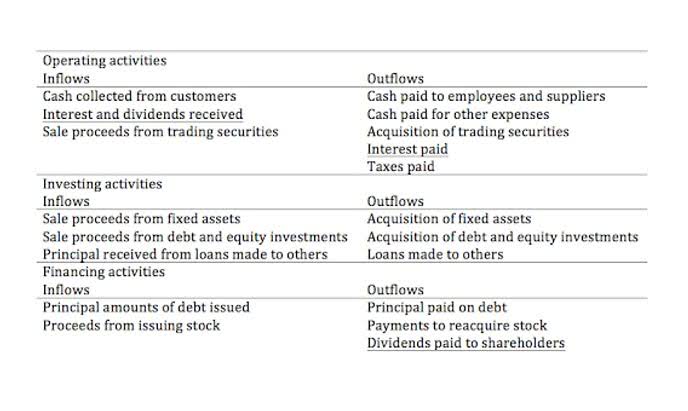
Recognizing revenue from Construction-in-Progress (CIP) projects is a https://www.facebook.com/BooksTimeInc/ nuanced process that requires careful consideration of various accounting principles and industry standards. One widely adopted method is the percentage-of-completion approach, which allows companies to recognize revenue based on the project’s progress. This method aligns revenue recognition with the actual work completed, providing a more accurate reflection of the project’s financial status. For instance, if a project is 60% complete, 60% of the total contract revenue can be recognized.
What is the journal entry for WIP?
- Construction work-in-progress accounting refers to the record-keeping of all expenditures that accrue in constructing a non-current asset.
- This data helps assess project budget adherence and ensures accurate financial reporting for audits.
- Regular meetings and updates are essential to keep all stakeholders informed about project progress, potential issues, and resource needs.
- This includes financial planning, risk management, record-keeping, and financial reporting.
- They enable construction firms to have confidence in their reported CIP figures.
- They should NOT be stored in the CIP account; otherwise, there is a considerable risk that expensable items will not actually be charged off for some time.
This matches expenses to revenues when WIP is finished in line with accrual accounting principles. Construction in progress is shown as a long-term asset on the balance sheet under the property, plant, and equipment section. CIP is not depreciated until the asset is placed into service upon completion, at which point it is reclassified to the appropriate fixed asset account. The construction execution stage is where the actual construction work takes place. CIP accounts track direct and indirect costs incurred during this stage, such as labor expenses, equipment rentals, and project management fees. Ongoing cost monitoring and control are essential to ensure projects stay within budget, leveraging accounts payable tracking to manage cash flow.
- According to the matching principle of accounting of accrual accounting, the expenses related to certain revenues must be recorded in the same period when they were incurred.
- Partnering with seasoned financial professionals ensures that your company navigates the intricacies of construction work-in-progress accounting with precision and proficiency.
- All of the components must be measured reliable which enables the accountant to record them into the financial statement.
- Normally, upon completion, a CIP item is reclassified, and the reclassified asset is capitalized and depreciated.
- Construction in progress accounting plays a crucial role in tracking and managing construction costs throughout the entire construction project lifecycle.
Summary of CIP Accounting
- It can also lead to cash flow problems for contractors if clients delay payment due to billing discrepancies.
- In the next section, we will explore the principles of construction cost tracking in CIP accounting.
- Accurate estimation of work completed, diligent record-keeping, and regular reconciliations are crucial to ensure billing reflects the actual progress of the project.
- It dictates how revenues and expenses should be allocated among different stages of work, as well as which items arise from a particular contract type.
- However, no financial information is available until contract completion, posing challenges for interim performance management.
It reflects partly completed products that are still in the production process. WIP is later reclassified as finished goods inventory when the production process is complete. To avoid overbilling and underbilling, construction companies need robust billing processes and systems in place. Accurate estimation of work completed, diligent record-keeping, and regular reconciliations are crucial to ensure billing reflects the actual progress of the project. As it goes, small construction companies rarely hire experts to track and record their transactions.
How to Record Entries for CIP Accounts

As construction projects grow in complexity, specialized CIP accounting technology and staff training help firms optimize financial oversight. From roads and bridges to city sewer lines and parks, public sector construction projects have lengthy timeframes often spanning years. Government accounting standards make regular CIP reporting mandatory to assess taxpayer return on investment. Under this simpler method, all revenues, expenses, and profits are recognized only at the end after project completion.
Auditing of the Construction Work in Progress Account

This transition is essential to meet accounting standards and allows businesses to log their investment in new constructions on their books accurately. The construction in progress accounting process covers the entire construction project lifecycle, from inception to completion. CIP accounts play a vital role in tracking and managing construction costs at each stage, providing valuable insights into project financials. By effectively utilizing CIP accounting, construction companies can ensure accurate financial reporting, better cost control, and informed decision-making. This section provides detailed insights into the procedures and protocols involved in construction in progress accounting. It covers the accurate recording of construction costs and expenditures using different methods such as job costing and cost classification.
Construction in Progress Accounting (CIP) Basics
The company will not be able to over or under-record the expense on income statement. These assets will be reversed to the actual fixed assets when the construction is finished and total costs are measured reliable. The IAS 11 regulation on construction contracts is an important step toward ensuring that companies are financially responsible for their projects. It dictates how revenues and expenses should be allocated among different stages of work, as well as which items arise from a particular contract type. Construction Contracts are crucial pieces in understanding company finances because it determines what income comes from them while also deciding when cost recoveries occur. Regular financial reviews and audits are also instrumental in tracking CIP costs.
CIP accounts continue to accumulate costs related to design and planning activities, including architectural and engineering fees. Construction companies keep their construction-in-progress accounts open for longer than needed to keep their assets value https://www.bookstime.com/ high and misrepresent profits. That’s why it is better to track projects undergoing construction separately on a different balance sheet until completion. However, it is easier said than done, as managing a single balance sheet is no child’s play, and handling more than one only makes the task almost undoable.

Industry Advancements

Managing construction-work-in-progress accounts presents unique challenges, necessitating specialized expertise and training. Given the complexities involved, many businesses opt to enlist the services of a chief financial officer (CFO) to oversee these records. By doing so, they mitigate the risk of costly accounting errors and ensure compliance with regulatory standards. Construction-in-progress accounting serves as a cornerstone of financial transparency, enabling companies to maintain accurate records, bolster investor confidence, and adhere to regulatory requirements.
Comparison of Revenue Recognition Methods
Ready-to-use templates for managing bookkeeping, financial reporting, and tax filing. Effective communication and collaboration are also accounting cip paramount in a multi-project setting. With various teams working on different projects, ensuring that everyone is on the same page can be challenging. Implementing a centralized communication platform, such as Slack or Microsoft Teams, can facilitate better coordination and information sharing. Regular meetings and updates are essential to keep all stakeholders informed about project progress, potential issues, and resource needs.
